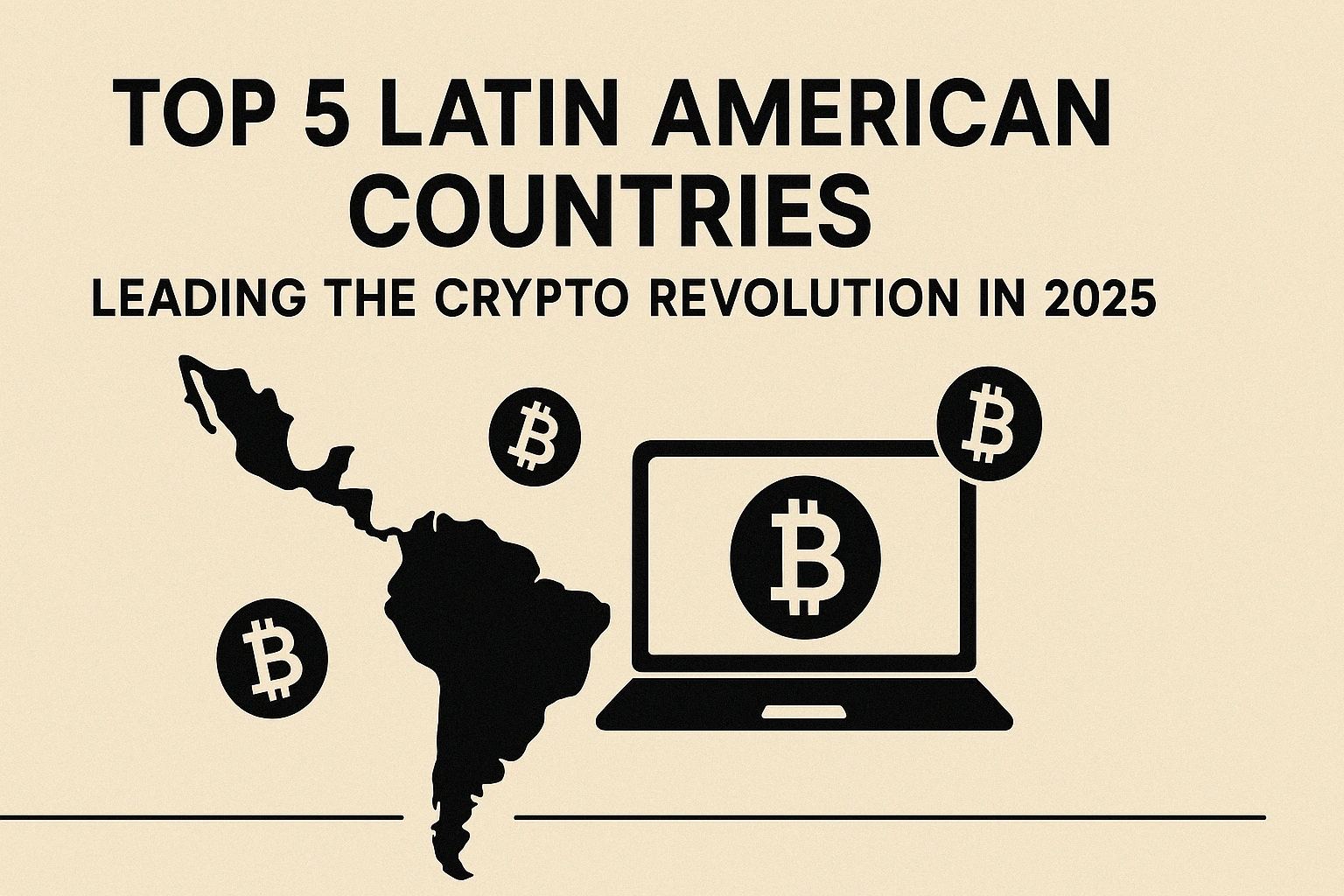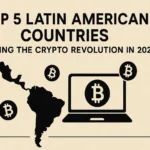Latin America has become one of the most exciting regions for cryptocurrency in 2025. With economic instability, unbanked populations, and increasing tech adoption, it’s no surprise that LATAM is now a major player in the global crypto movement.
After spending more than 5 years in the crypto industry, I’ve watched this revolution unfold firsthand. From mobile-first Bitcoin wallets in rural Brazil to Ethereum meetups in Buenos Aires, the innovation coming from Latin America is real — and growing fast.
In this article, we’ll look at the top 5 countries in the region that are shaping the crypto future, why they matter, and what sets them apart.
1. El Salvador
Status: Bitcoin is legal tender
El Salvador made global headlines when it became the first country to adopt Bitcoin as legal tender in 2021. Fast forward to 2025, and the country is doubling down on its crypto-first strategy.
- Bitcoin is accepted nationwide alongside USD
- The government built “Bitcoin City” — a tax-friendly zone powered by geothermal energy
- Citizens can pay taxes and receive salaries in BTC
While there’s been criticism about adoption speed and volatility, El Salvador has sparked international conversation and inspired other governments to rethink digital currency strategy.
2. Brazil
Status: Regulated crypto market, mass adoption underway
Brazil is Latin America’s largest economy and one of the most advanced crypto markets in the region. The Central Bank has launched a digital real pilot, and private companies are embracing Web3 tech at scale.
| Key Highlights | Details |
|---|---|
| Central Bank Digital Currency (CBDC) | Digital Real in pilot stage with select banks and fintechs |
| Crypto regulation | Comprehensive law passed in 2022 to oversee exchanges and custodians |
| Adoption | Over 16 million Brazilians own crypto |
Banks like Nubank and Mercado Pago have integrated crypto services directly into mobile apps, making Bitcoin and Ethereum accessible to millions.
3. Argentina
Status: Massive grassroots crypto adoption
Argentina is one of the most crypto-active countries in the world. With inflation soaring above 200% annually and capital controls limiting access to USD, crypto has become a lifeline.
- Stablecoins like USDT and USDC are widely used to protect savings
- Freelancers are paid in Bitcoin and Ethereum via international platforms
- Apps like Lemon, Buenbit, and Ripio lead in user adoption
What makes Argentina unique is that crypto isn’t just speculation — it’s survival. People use it daily to store value and transact more freely than with fiat.
4. Mexico
Status: Crypto adoption growing fast, solid regulatory progress
Mexico has become a regional fintech hub, and crypto is right at the center. While not yet legal tender, digital assets are integrated into day-to-day finance for millions.
- Bitso, one of LATAM’s biggest exchanges, operates from Mexico and partners with global firms like Circle and Ripple
- Crypto is used for cross-border remittances, a $50+ billion market in Mexico
- Central Bank is exploring a digital peso
Mexico’s crypto regulation is still evolving, but the government is moving toward clearer guidelines to support growth while preventing abuse.
5. Colombia
Status: Rapidly growing market with strong P2P activity
Colombia may not always make headlines, but it’s one of the fastest-growing crypto markets in LATAM. The reasons are simple: limited trust in financial institutions, high mobile penetration, and growing interest among youth.
What stands out is the popularity of P2P platforms like Binance P2P, LocalBitcoins (before its closure), and Paxful. These allow Colombians to buy and sell crypto directly with local payment methods.
- Government launched regulatory sandbox for fintech and blockchain startups
- Crypto used for remittances, investing, and saving
- Local wallets and exchanges are expanding rapidly
With increasing regulatory clarity and strong community engagement, Colombia is quietly becoming a Web3 hotspot.
Why LATAM Matters in the Global Crypto Revolution
Latin America isn’t just following the crypto trend — it’s shaping it. The region is creating real-world use cases that go beyond hype, from daily spending to surviving currency collapse.
What Sets LATAM Apart:
- Crypto used as a necessity, not luxury
- Strong mobile-first infrastructure
- Rising number of developers and startups
- Governments increasingly open to blockchain innovation
FAQ: Crypto in Latin America
Which LATAM country is most crypto-friendly?
El Salvador leads legally with Bitcoin as legal tender. Brazil and Argentina lead in adoption and innovation.
Is it safe to use crypto in Latin America?
Yes, but safety depends on your tools. Use trusted wallets, secure exchanges, and enable two-factor authentication.
Are crypto profits taxed in Latin America?
Yes, in some countries. Brazil and Mexico, for instance, require crypto income reporting. Argentina has introduced new crypto tax guidelines. Always check local laws.
Can I live entirely on crypto in LATAM?
In some countries like El Salvador and parts of Argentina, yes — you can pay for goods and services with crypto, especially using Bitcoin and stablecoins.
What’s the future of crypto in Latin America?
Bright. With growing developer ecosystems, regulatory progress, and user demand, LATAM is becoming a global leader in practical blockchain adoption.

Georgia Briggs is a cryptocurrency market expert. She has been involved in the cryptocurrency market since its inception, and has a wealth of knowledge and experience when it comes to this exciting new industry. Georgia is passionate about helping others learn about and invest in cryptocurrencies, and she is dedicated to educating people on the potential benefits of this innovative technology.







